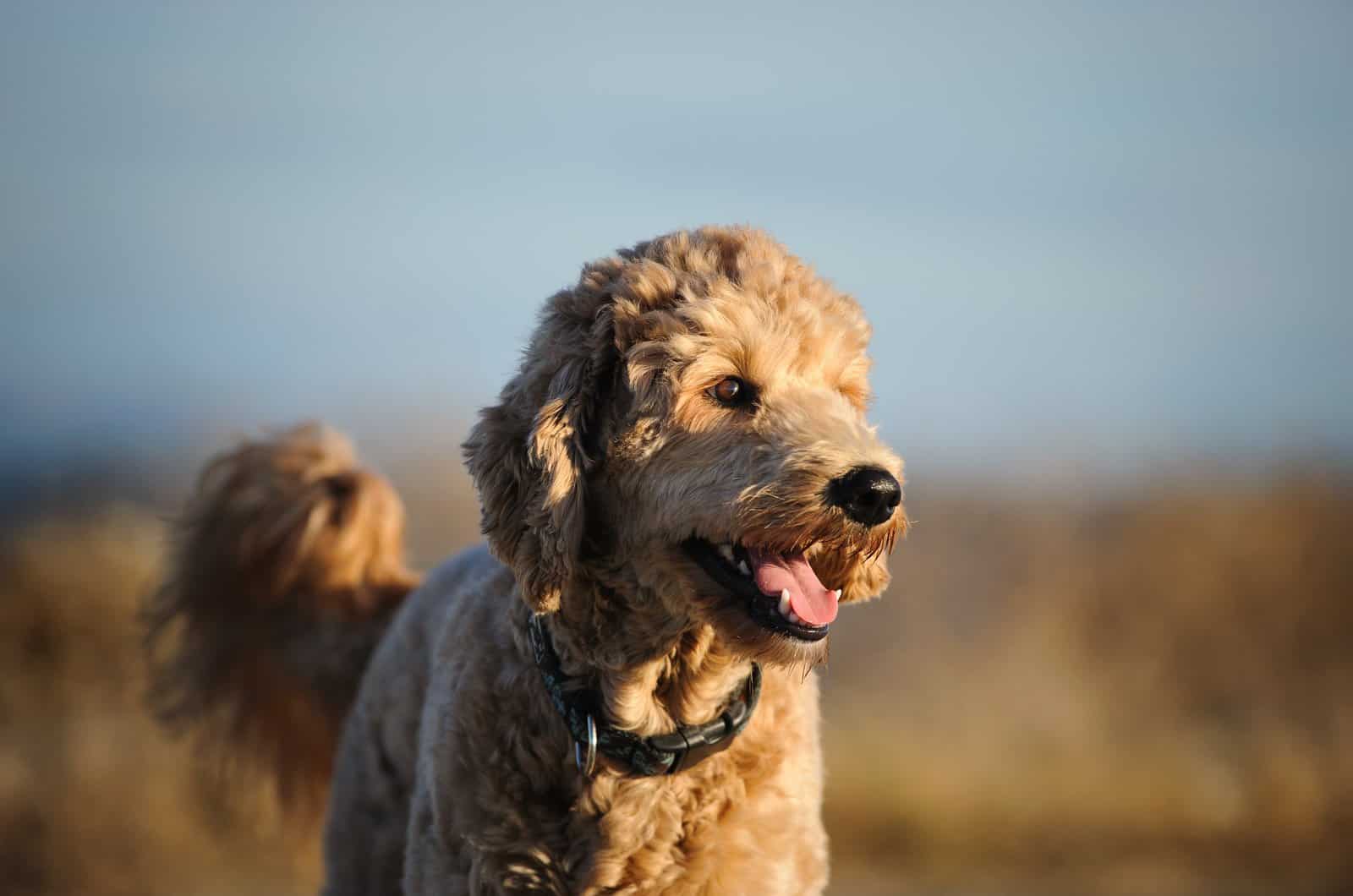Animal reproduction is a very interesting and complex subject. Reproduction is one of the fundamental laws of biology. In order to survive, all living beings must have the ability to reproduce.
Without it, life wouldn’t exist. Without reproduction, our favorite animal species – dogs, wouldn’t exist.
Why is dog reproduction an interesting topic to talk about?
Well, a dog’s behavior changes drastically during its heat cycle. In fact, not only do dogs go through behavioral changes, but their bodies also start to change.
Both male dogs and female dogs naturally go through a mating season at some point of their lives while reaching sexual maturity.
If you notice some unusual changes in the behavior patterns in your adolescent dog, the heat period should be the first thing that comes to your mind.
First-time dog owners often don’t have a clue as to why their male dog is behaving differently than usual. And, no, he’s not sick and he’s definitely not going crazy.
Well, maybe he is going crazy – crazy head over heels… or should I say, head over paws for the female dog of his life!
Male dogs fall easily in love, and they’re definitely not afraid to show it!
Today, we’re going to talk about the specific signs that a male dog wants to mate. After reading this article, you’ll be able to notice the signs that your male dog is showing when he’s ready to make a move on that cute little female dog he’s had his eyes on for a long time!
So, let’s start off by mentioning some of the most important signs that a male dog might be showing during the heat period!
Behavior Changes
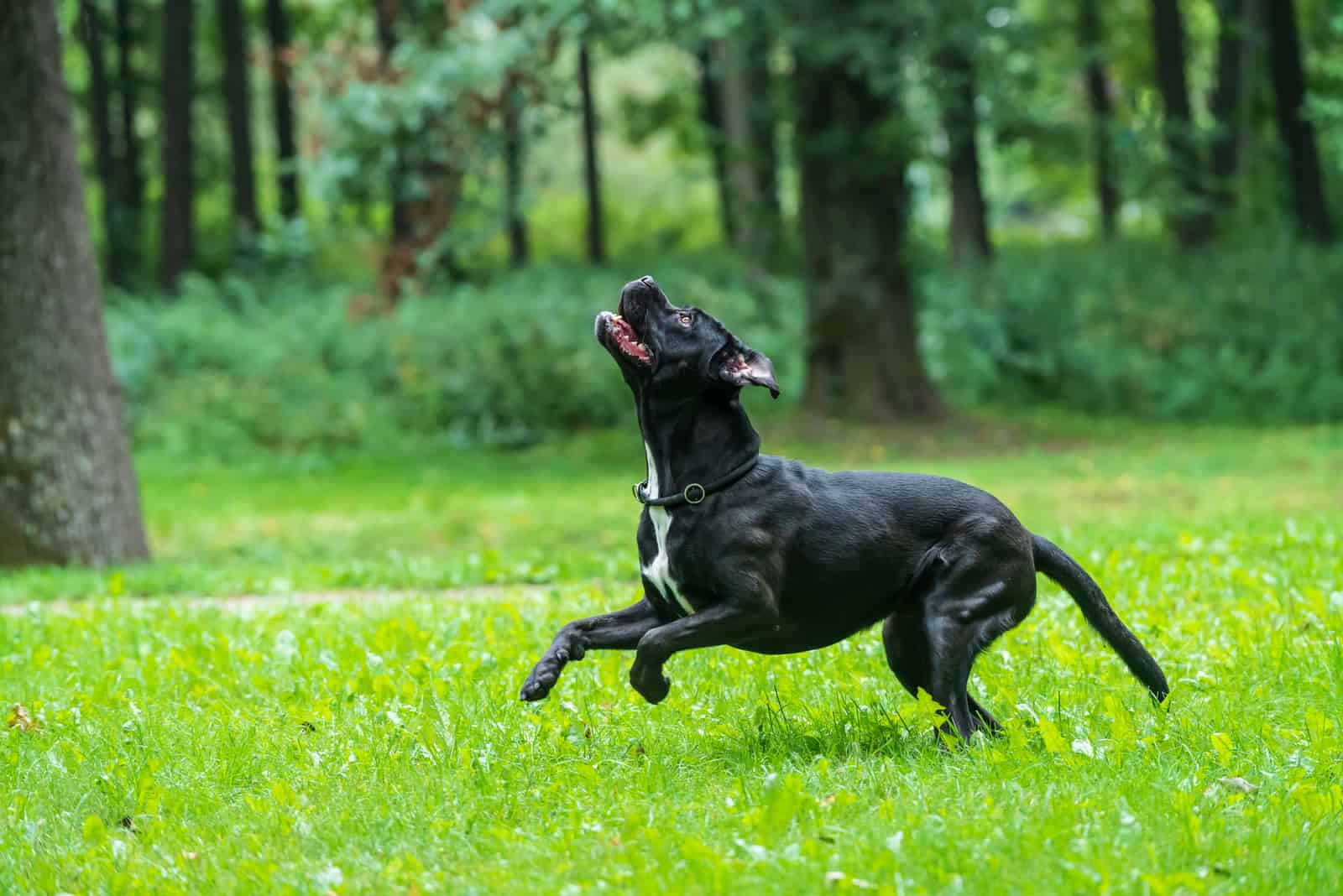
The urge to mate is quite stronger in male dogs than it is in female dogs.
The first signs of a male dog in heat will appear through different behavioral patterns. Behavioral change isn’t really subtle, so it’s going to be relatively easy for you to figure out what’s going on.
Your male dog will show the following signs: roaming and restlessness, urine marking behavior, and mounting (humping).
All of these signs are induced by the presence of an unspayed female dog in heat. Let’s see what happens when a male dog wants to mate!
If an intact male dog is ready to mate, but has no possibility to, he will most likely become sexually frustrated. These behavioral changes are the first signs to look out for.
1. Roaming and restlessness
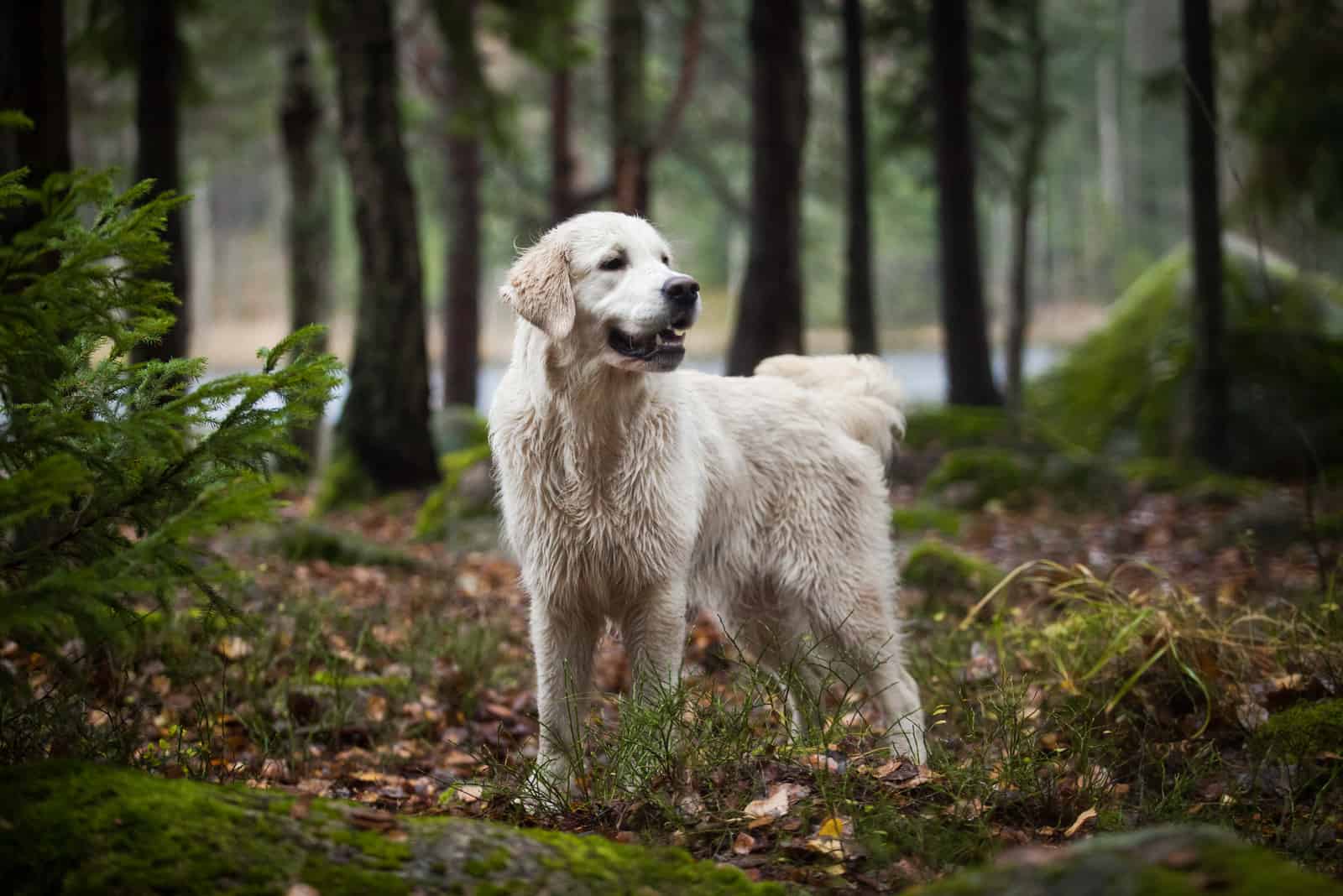
The first sign to look out for in a male dog that wants to mate is restlessness and roaming. This basically means your male dog will want to go out more often than usual.
Not only that, but your male dog will most likely wander off looking for a female dog.
Roaming is a very specific behavior for male animals. It’s especially expressed in intact male dogs.
Female dogs leave scent traces, which act as clues for male dogs to follow. So, it’s no surprise that male dogs will be obsessed with anything a female dog was in contact with before.
Moreover, female dogs in heat will play a great part in this. They won’t ignore the male dogs. Instead, they will make sure to put themselves anywhere near a male dog that is searching for a partner.
If you stumble upon a female dog in heat while your male dog is at home, he will surely notice her scent once you get home. This will trigger other mating behavior actions.
Roaming can be really annoying and troublesome for both the owner and the male dog. Your dog can get easily lost or even stolen from you.
Because he is only focused on finding his mate, a male dog won’t pay much attention to his surroundings. He will walk for miles until he finds the love of his life… if he finds it, that is.
It’s good to know that this type of behavior can greatly depend on a dog breed. Some dog breeds like the Labrador Retriever, the Siberian Husky, and the German Shepherd are known to most likely wander off from home.
Usually, members of the giant breeds have more stamina to walk for miles without getting tired. Don’t expect much of this behavior from a male Chihuahua or any smaller breed.
What can I do about this?
To prevent and to stop your male dog from roaming and overall restless behavior, you should include things that get his mind off of mating.
If you don’t want to neuter your dog yet, you can try to include as many in-home activities as possible. This doesn’t mean you won’t take your male dog out on walks.
What this means is that you should come up with fun new games that your dog will get busy with. The main goal should be for him to forget about sniffing and searching for female dogs. So, distract him with lots of new activities.
If you usually let your dog out in a garden for a run, make sure to have a good fence around the house. But beware… some dogs are quite sneaky and athletic. Sometimes, a mere fence is not enough to prevent a male dog from running away, chasing potential girlfriends.
Related: Professional Canine Escape Artists: How To Stop Dog From Jumping Fence
Another way to stop roaming is training with positive reinforcement. Again, this will act as a distraction, and your dog will be happy to receive yummy treats. But, this might not be a long-term solution.
Surely, this will be a hard battle between you and your male dog’s strong, natural instinct to mate. You might win the battle, but you will most likely lose the war.
The only real way you can stop this behavior is by neutering your dog. Neutering a male dog has proven to be the most successful method in stopping the male dog from wandering off.
As a result, you will get a slightly calmer male dog that won’t go crazy over the scent of a female dog. He simply won’t be interested anymore!
2. Urine marking behavior
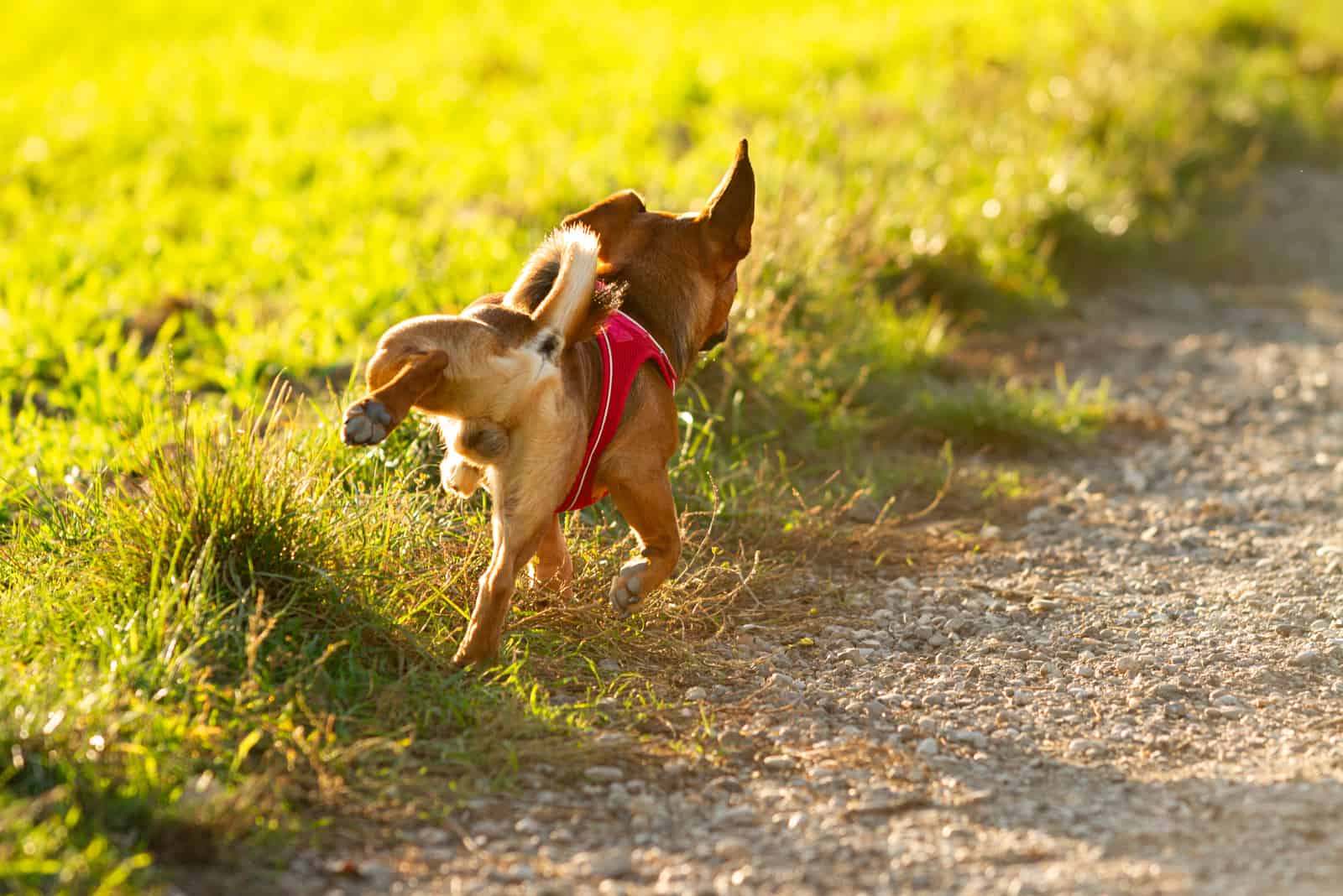
Urine marking can be a real problem for any dog owner when done inside the house. And, mind you, male dogs will urinate inside the house if they catch even a small scent from a female dog.
Although this behavior is completely instinctive and natural, urine marking is often referred to as unwanted and problematic dog behavior, which is totally understandable.
Urine marking is usually expressed when male dogs reach sexual maturity and start looking for females. What happens is that male dogs start urinating on objects, sometimes even on other animals and people.
A male dog won’t always do this to leave traces for a female dog… he also pees around to show other male dogs that he’s the alpha. Therefore, urine marking is often seen in houses with two or more male dogs.
Urinating is not excessive. Smaller amounts of more concentrated urine are released, leaving a sharper, stronger smell.
So, if a male dog starts urinating on furniture and carpets, it will get quite smelly in the house.
Male dogs will usually have a few “favorite” objects to pee on. This can also be a specific spot within the house, like a wall corner or on doors.
How do I stop my male dog from urine marking?
Firstly, it’s important for you to recognize whether your male dog is urine marking because of his urge to mate or because of some health problems.
Health problems, such as urinary tract infections, can make your dog pee small amounts frequently throughout the day.
Once you get that out of question, the next thing you’ll want to do is train your dog with positive reinforcement. Just like with the mounting training method, the male dog needs to know the basic voice command, “NO”.
If you see your dog preparing to urinate anywhere in the house, make sure to let him know that he’s not supposed to do that. Then, proceed to call him outside. Once he urinates outside, give him a snack as a reward for being a good boy and not peeing in the house!
That sounds easy, right? Well, it is if your dog listens and obeys your commands. But, if your dog is more on the stubborn side, you might want to seek professional training.
At the end of the day, neutering your male dog will help solve this problem. Consult your veterinarian to find the best solution for both you and your puppy!
3. Mounting behavior
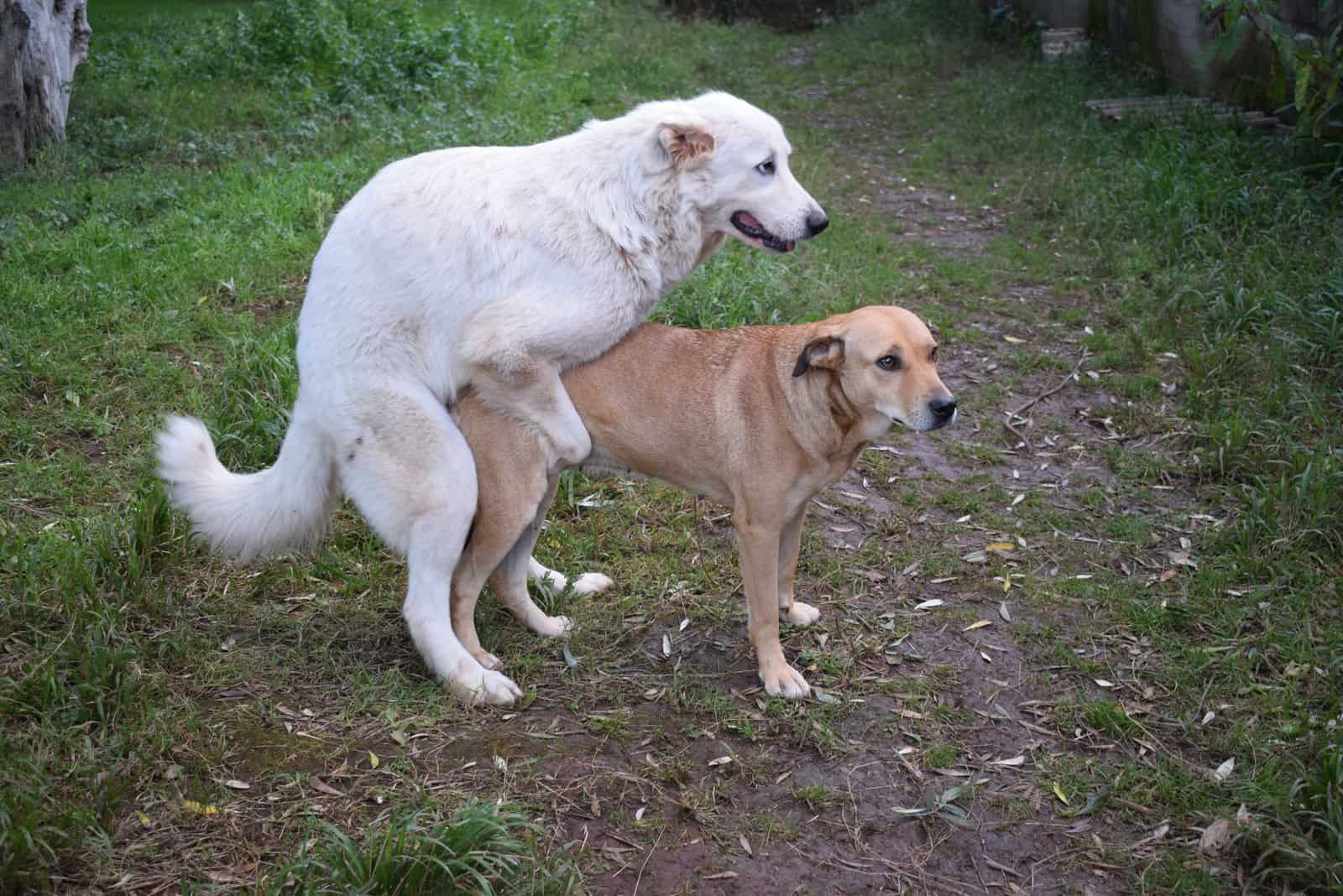
Mounting and humping in dogs is common and normal behavior. We have to point this out right at the beginning. A dog can jump on other dogs (both male and female dogs), people, and even objects like pillows or plush toys. Furthermore, you could notice your dog humping the air!
Mounting is a sexually motivated behavior, but this isn’t always the case. In fact, mounting is purely instinctive and completely natural.
But, this kind of behavior becomes a problem when a male dog starts to hump people or other animals. It becomes an even bigger problem if it’s frequent.
It can get really awkward for dog owners when their male dog starts humping everyone and everything around them.
Mounting and humping: why male dogs do this
Although this behavior can really turn your cheeks red out of embarrassment, it’s important that you understand why your male dog does it.
Here are some of the most probable causes for mounting behavior:
Sexuality/hormones
Because of their hormones and sexual desire, unneutered male dogs can mount other dogs. Usually, the excessive testosterone levels in male dogs are to blame.
The testosterone hormone is the most important hormone in animal reproduction because it triggers sexual behavior.
Mounting can result in fertilization if the male dog is not neutered and if the female dog is not spayed. Therefore, if you do not want pups, such activity should be stopped immediately.
Neutering your male dog on time will help solve this unwanted behavior.
But, here’s the catch: some dogs develop this habit. Habitual mounting continues even after neutering, and you might not be able to stop it.
You can prevent this behavior from becoming a habit by stopping your male dog when it starts humping other dogs or inanimate objects. You should redirect it to other activities.
Excitement and dominance
If your male dog is happy or in a state of excitement, energy, or even stress, they try to release it in one way or another.
Some dogs show excitement by barking, running or jumping, and some by mounting. This is normal for most dogs, especially for young, adolescent dogs that have just reached sexual maturity.
It is possible to regulate this behavior through regular training or redirecting your dog onto something else. Some dogs hump because they are looking for attention or else they are just bored.
Another reason why your male dog is humping other dogs, including male dogs, is because of establishing his dominance. This sounds so weird, right? But, that’s pretty normal in the canine world.
Health problems
This is a more serious topic we want to address as it should be regulated immediately. Your dog’s health is the number one priority, so it’s important to know about potential health problems that might actually trigger mounting behavior in male dogs.
For example, UTIs (urinary tract infections) and skin allergies can both cause mounting. If mounting is caused by health problems, other symptoms of the disease will follow.
Keep an eye out for skin rashes, unusual genital discharge, yelping, frequent urination, and changes in urine color. Consult your veterinarian to rule out any of these health issues.
Health problems of this nature are usually not a result from the male dog’s urge to mate. Some health problems might have been there before, but have only become noticeable during the mating period.
Your veterinarian will perform a detailed check up, along with blood tests that will show if there are any signs of inflammation or infection in your dog’s system.
How do you stop your male dog from mounting?
Fortunately, for you, mounting behavior in male dogs can be solved in different ways. If you decide not to neuter your intact male dog, there’s another way to stop mounting, and that is through regular training.
You have to show the male dog that you disapprove of the behavior when he performs it. Call your pet’s name and give him a sharp command: “NO” or “STOP”.
If the dog stops for a moment, give him a reward and redirect his focus on his favorite snack, removing the object that he likes to hump.
Simply, you will have to train your dog with voice commands and positive reinforcement – he’ll get a snack if he stops humping.
If the snack method doesn’t work, use a whistling toy. The main goal is to distract your dog and redirect him to another activity.
Don’t be surprised if these methods don’t work out in the end. It’s very likely that the testosterone levels in your adolescent male dog will overcome his train of thought. The animal instinct is something you can’t go against.
There is quite a big chance that your male dog won’t pay much attention to you or your commands. He’ll only have one thing on his mind – mating.
You can opt for professional training and socialization. Neutering your male dog might be the best solution if this behavior continues any further.
Read Also: Tips And Tricks On How To Get Dogs Unstuck During Mating
Other Signs A Male Dog Wants To Mate
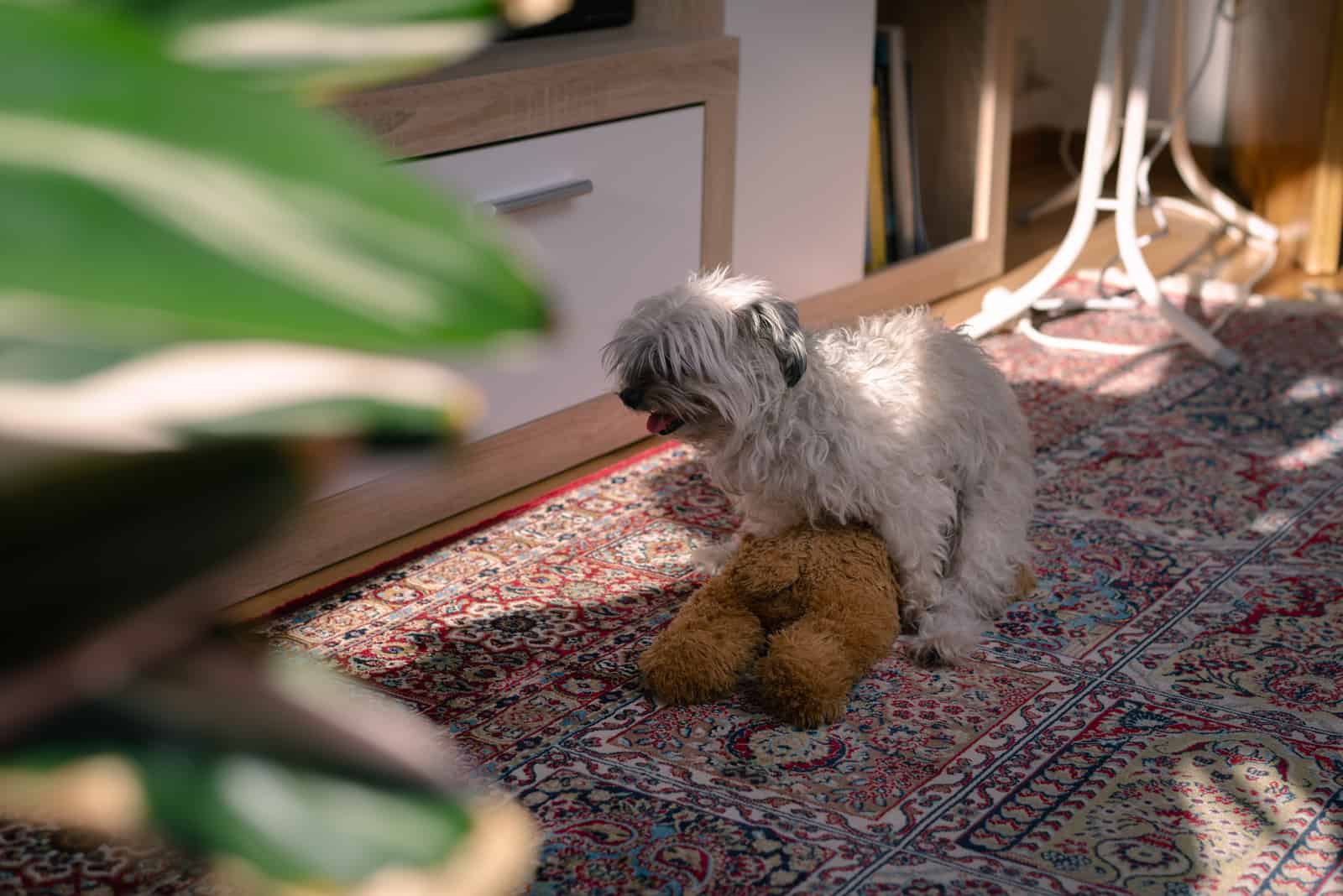
Among all of the above-mentioned signs, there are a few more. Most of them are the result of previously mentioned signs of mating behavior in male dogs.
For example, activities such as mounting, thrusting, and humping are anxiety-relieving and even calming for some male dogs.
Male dogs find pleasure in these activities as they become relieved of all the built up hormones and pressure of a constant strong instinct that keeps kicking in.
So, what happens sometimes is that a male dog ejaculates even though he didn’t have any contact with a female dog. Ejaculation can happen spontaneously or as a result of mounting.
If you have witnessed this happening, it’s important not to scold your male dog for it. Your negative feedback might induce higher anxiety levels and stress, which can trigger even more of this behavior.
Instead, do your best to prevent this from happening by following the above-mentioned tips, as well as preparing your male dog for neutering.
Sexual Maturity In Male Dogs
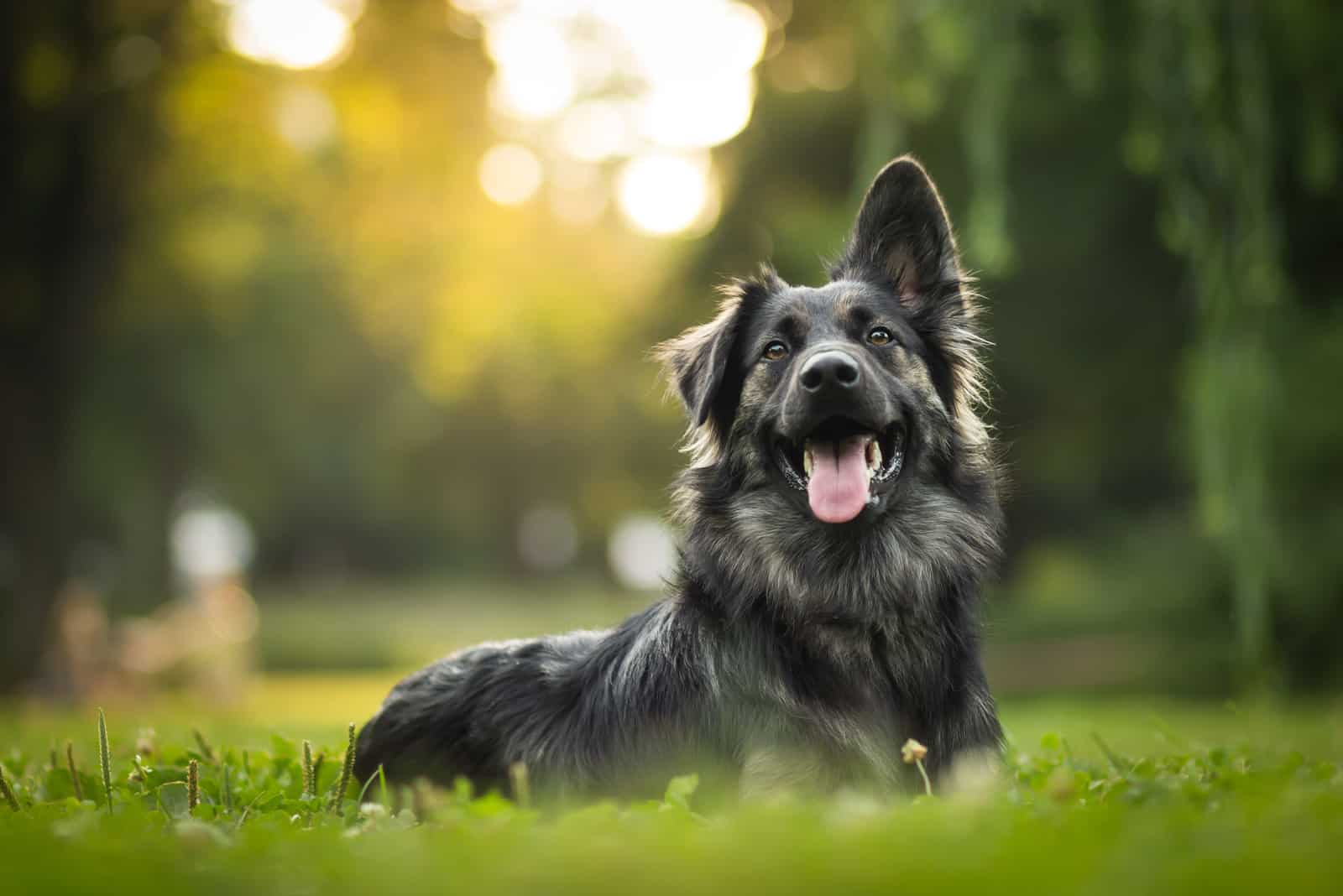
Male dogs become fertile as early as six months of age. But, that’s just an estimate.
When a male dog will become sexually mature greatly depends on the dog breed and, of course – the genetics!
Depending on the dog breed, a male dog can become fertile anywhere from six months to two years of age. So, here’s how it goes.
Puppies from small- and medium-sized dog breeds are known to hit puberty at around five to six months of age. This can be extended to nine months of age.
On the other hand, male dogs from giant breeds reach sexual maturity a bit later. These dogs are considered sexually mature when they turn 15 to 16 months. Sometimes, this period can be extended to 24 months, but those are very rare cases.
An adolescent intact male dog will show a much stronger urge to mate than an adult dog that has already been through this period.
So, at about six months of age, most male puppies start changing their behavior. As their bodies grow, so does the testosterone level, which reaches its peak during the mating period.
It won’t be easy dealing with a puppy that’s going through puberty!
Male Dogs In Heat?
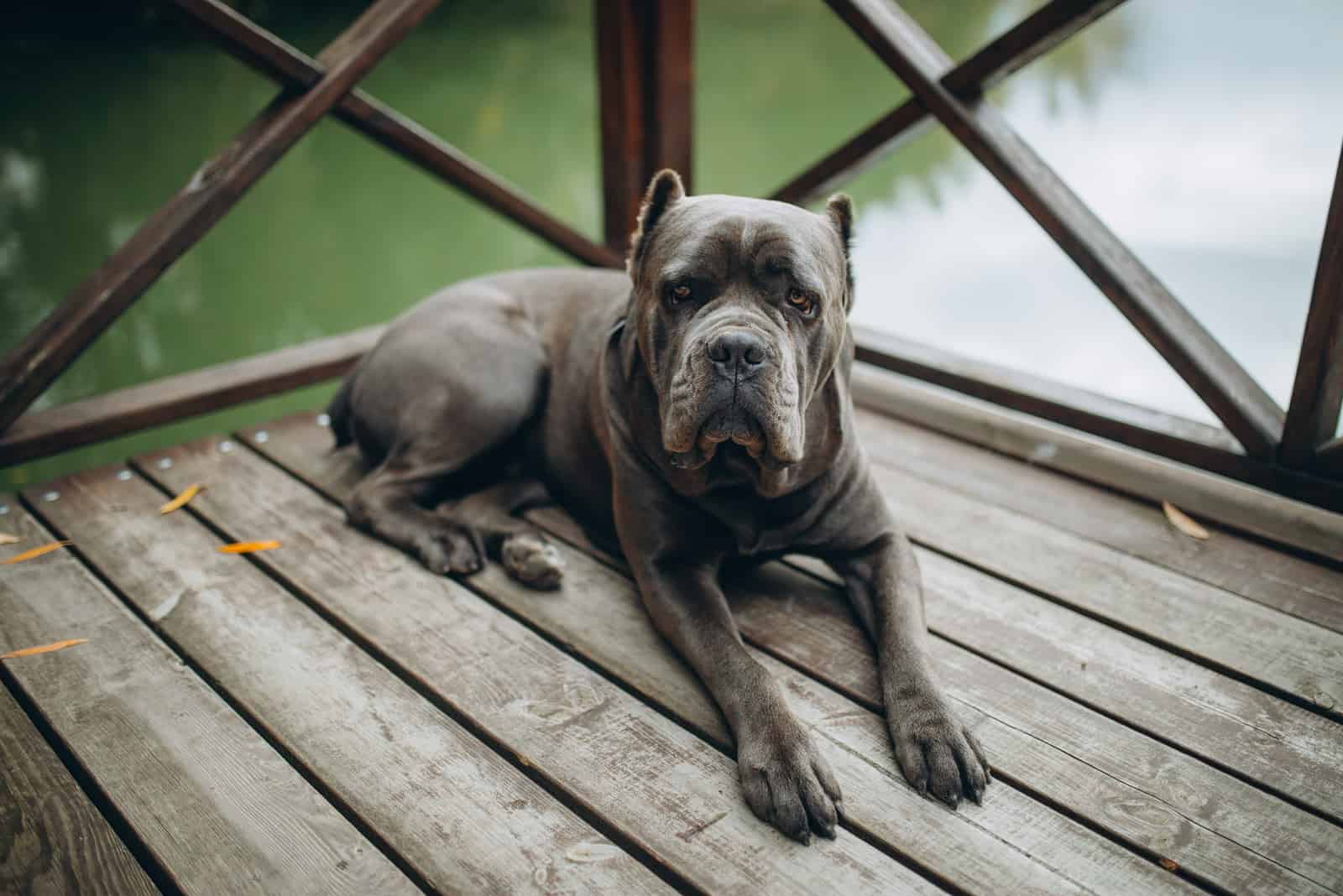
The sexual cycle of dogs is natural and instinctive. It dominates all physical and mental events in the body.
The road to sexual maturity in male dogs is a bit different than the one we see in female dogs. It’s actually easier to understand.
There’s no such thing as a male dog in heat. “First heat” in male dogs is just a wrong way to describe the male dog’s instinct and urge to mate with his female dog partner.
In fact, most scientists, veterinarians, dog behaviorists, as well as the American Kennel Club claim that male dogs don’t actually go into heat. Which is true.
And, here’s an explanation:
Male dogs don’t have a heat cycle like female dogs. This means that male dogs don’t go through phases of estrus and proestrus, nor do they develop major visible changes in genitals.
The sexual urge of a sexually mature adult male dog occurs only when a female dog that is ready to breed founds herself nearby.
The vaginal secretion of a female dog in heat is the key pheromone-producing agent that triggers mating behavior in male dogs.
What this means is that if there’s no female dog in heat nearby, and no female dog scent anywhere to be found, your intact male dog won’t show any sign that he wants to mate.
Bear in mind that dogs have a really sharp sense of smell, so even a little bit of a female dog’s scent can go a long way.
The Role Of Pheromones
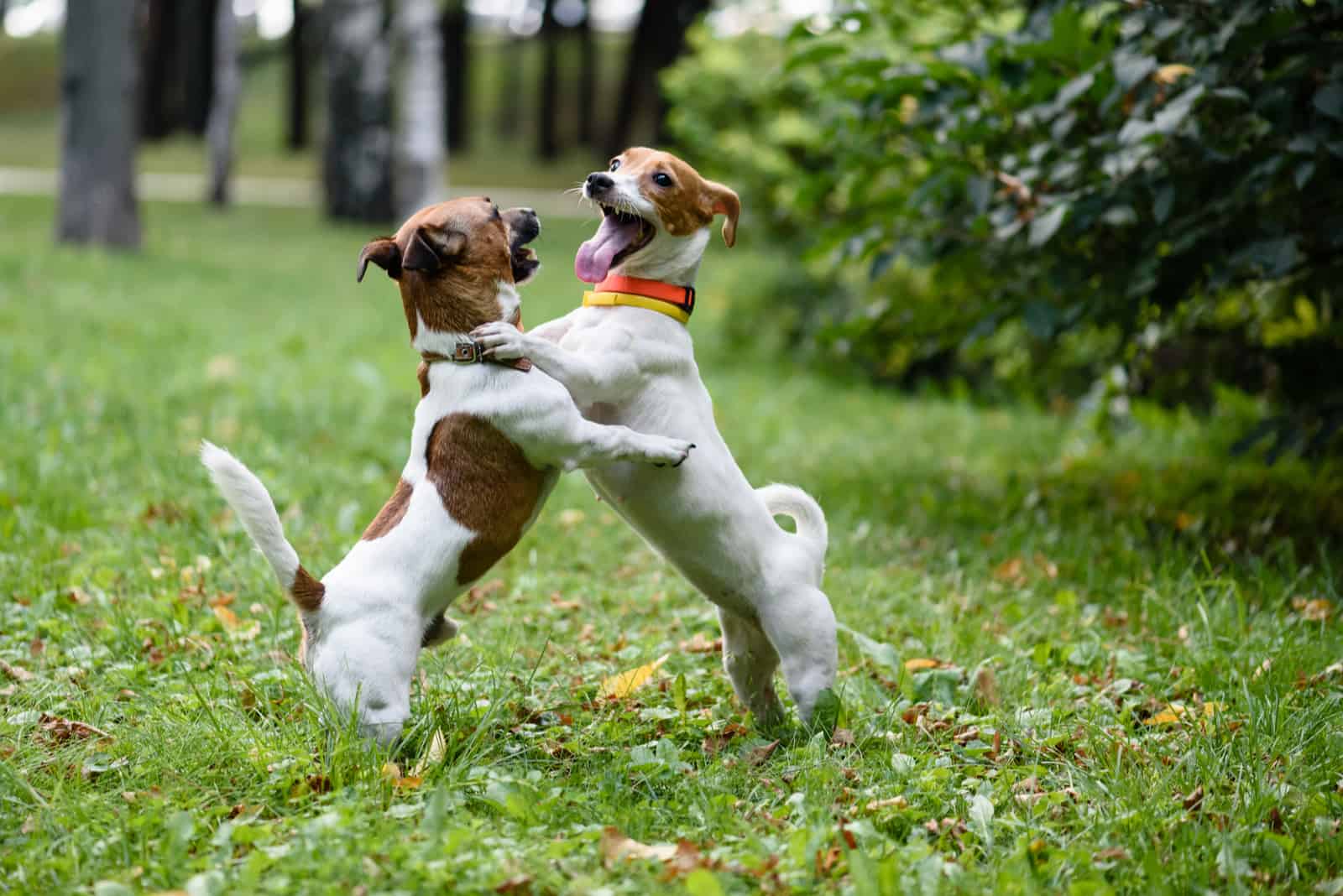
Let me introduce you to the magical chemical compounds that all animals have – the pheromones! This behavior-altering, natural substance is the reason why your dog has changed its behavior.
Pheromones are compounds produced by the dog’s sebaceous glands. They play an important role in every dog’s social life. Actually, pheromones are mediators that dogs communicate through. In this case, they’re an important factor in dog mating.
Basically, if there were no pheromones, there wouldn’t have been any dog mating nor reproduction in general. Pheromones are “the chemistry” between the two animals.
In a female dog, pheromones are released through vaginal secretion during her heat cycle. Not only are they released from vaginal secretion, but also from urine and mammary glands.
What this means is that when a female dog is in heat, she “leaves” traces that the male dog will follow. Male dogs are extremely attracted to the female dog’s pheromones. And, it’s also the other way around!
These pheromones are released through urine and vaginal discharge. Wherever the female dog is, her pheromones follow. So, male dogs will sniff around all the time, focusing on the scent of a female dogs’ pheromones.
Not all sex pheromones work. A male dog might be attracted to the scent of a female dog, but won’t find her very interesting. I guess she’s just not his type. That can also happen in the canine world.
Dog breeders know this all too well. When a male dog meets a female dog for the first time, it’s either an instant connection or it’s a “I think we should just be friends” kind of situation.
Next time you think that “love is in the air”, take a second guess – the pheromones are in the air!
Female Dogs In Heat
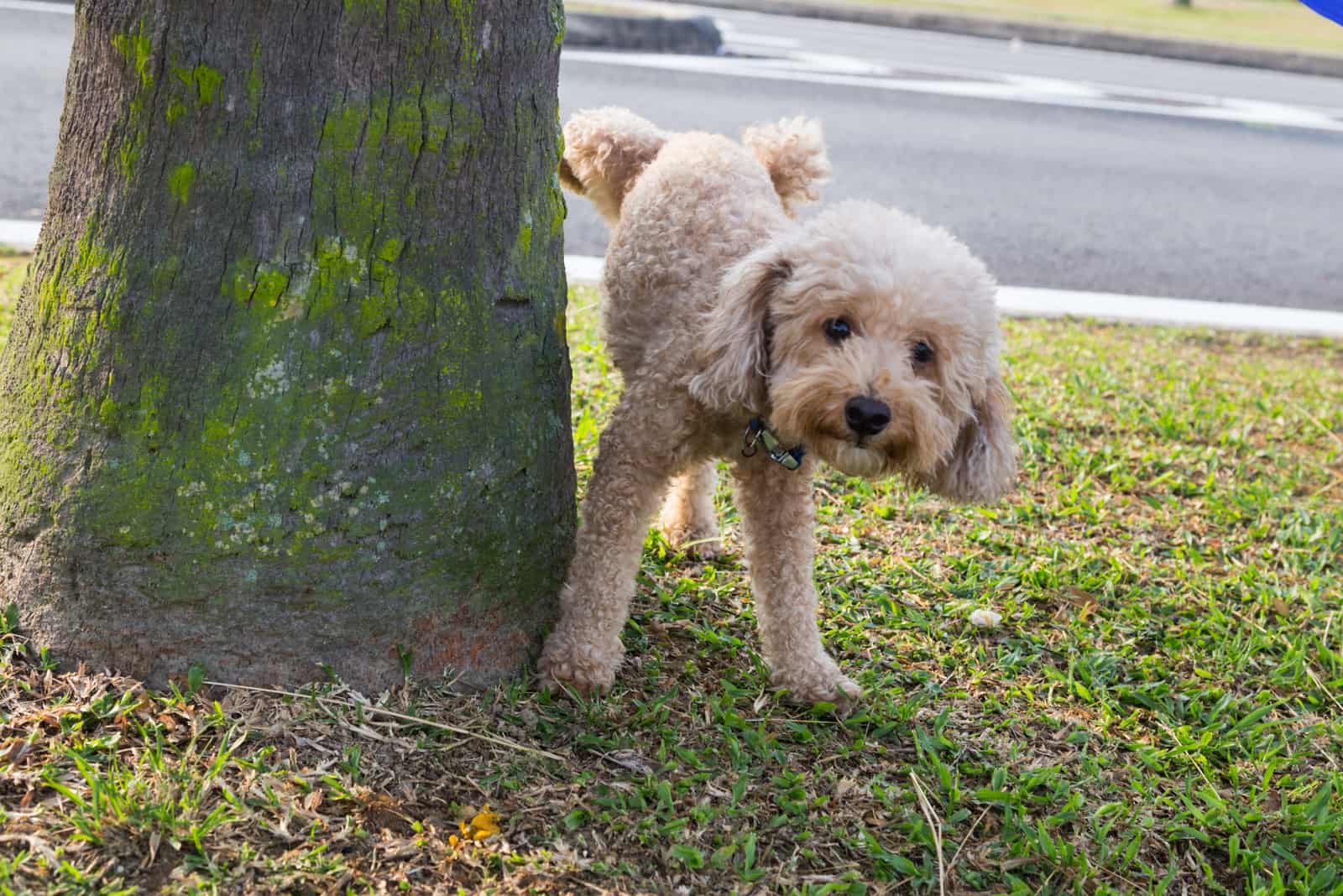
Proestrus is the first stage of heat in female dogs. Some describe it as the “readiness” stage, meaning the female dog’s body is preparing itself for mating.
This is where lots of changes in the female dog’s body happen. Most, if not all changes happen in and around the genitals.
The female dog’s vulva swells up and becomes more reddish in color. This is the first sign of a heat cycle that dog owners notice in unspayed female dogs.
What also happens is that it produces vaginal discharge that can vary in color anywhere from dark brown to red. Most first-time owners worry when they realize this, so it’s important to identify it as a sign of a female dog that’s in heat.
The proestrus stage is when the female dog’s behavior changes a lot: they become aggressive towards male dogs, restless, have mood swings, and urine marking.
The estrus stage comes right after the proestrus stage. In this period, a female dog is more receptive to male dogs.
How Neutering And Spaying Helps
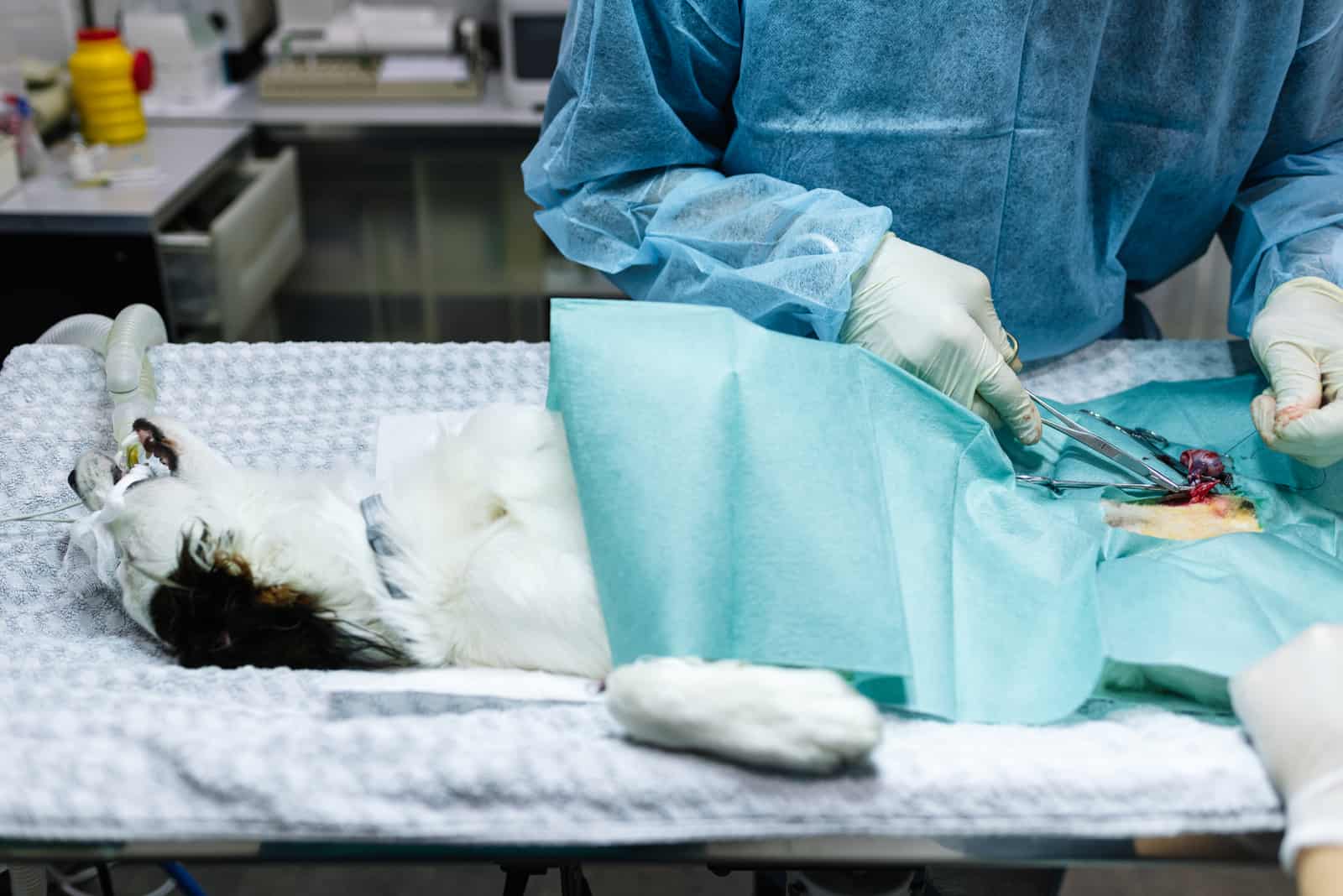
Some dog owners are very reluctant when it comes to the topic of neutering and spaying. But, there is no need to run away from something that will benefit both you and your dog.
Neutering male dogs
Neutering is a surgical procedure done in male dogs. Both testicles are removed by surgical incision. The whole procedure lasts between 15 and 30 minutes depending on the veterinarian’s skills and equipment.
There are some clear signs that your dog need to be neutered, and neutering your male dog helps in many ways:
Firstly, the dog won’t have that strong urge to mate. This means that he will feel less stressed and calmer.
Secondly, you won’t have to fear that your male dog might run away. Roaming and restless behavior is greatly reduced by neutering.
And, third, but the most important fact, neutering will lower the risk of prostate and testicular cancer in adult dogs. This should be one of the primary reasons why you should neuter your male dog.
Spaying female dogs
Spaying is a surgical procedure performed on female dogs. It’s a relatively easy procedure, but a bit more complicated when compared to neutering. This is why spaying a female dog is usually more expensive than neutering a male dog.
The procedure itself includes the removal of the ovaries and the uterus. Sometimes, only the ovaries are removed. That’s called ovariotomy. When both ovaries and the uterus are removed, that’s called ovariohysterectomy.
Spaying a female dog helps with behavioral changes during heat, lowers the risk of pyometra (infections of the uterine tract), and prevents breast cancer.
Conclusion
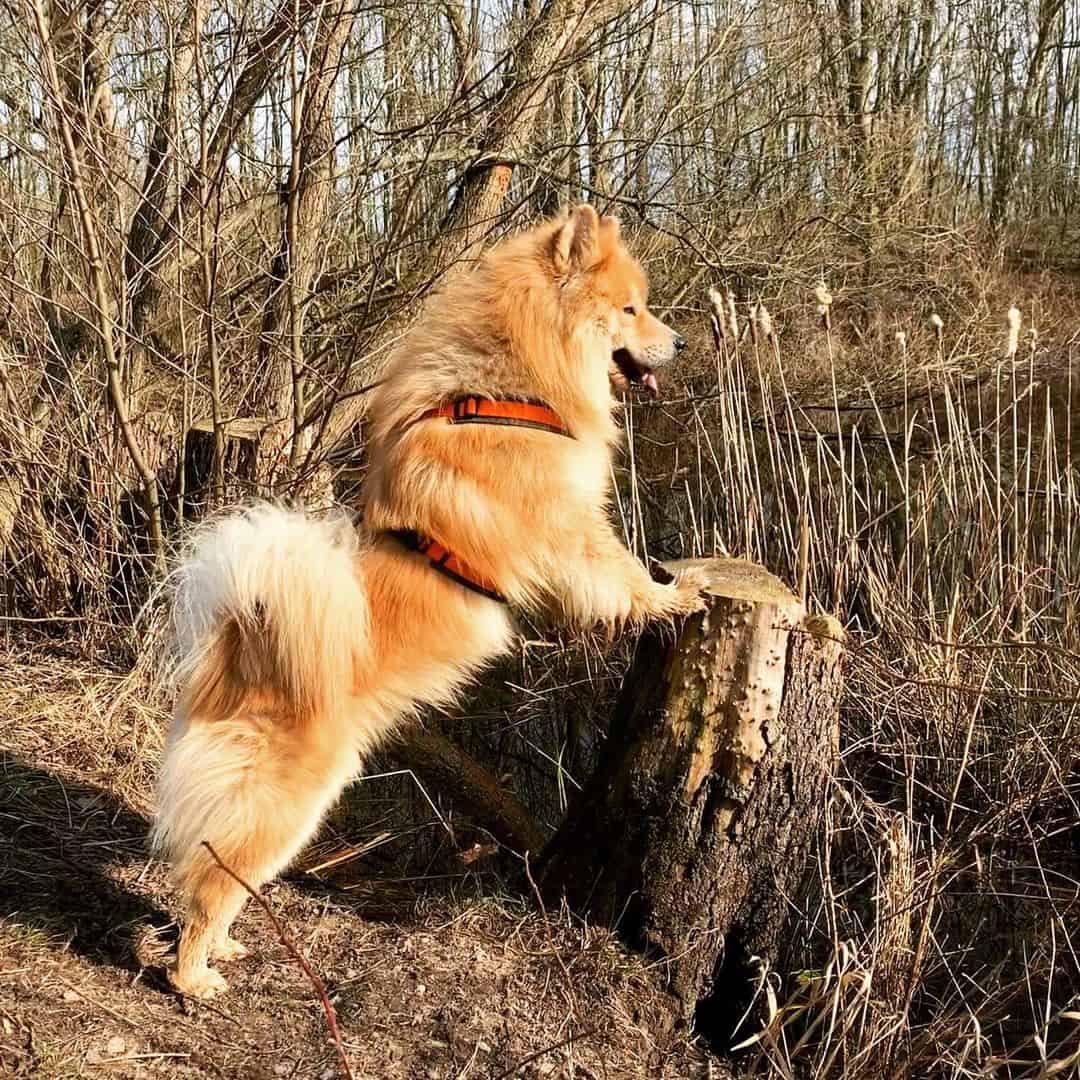
Photo from: @yuma_eurasier
During the mating season, both female and male dogs go through hormonal changes. This means that their behavior changes drastically.
Behavioral changes in adolescent and adult male dogs happen quite often. This can be due to many external factors such as stress, change of environment, a new owner, the presence of other animals, and so on.
But, some internal factors, like raging testosterone levels, affect the male dog’s behavior the most.
If you think your young male dog has started being nervous, stubborn, or even aggressive, the first thing that should come to your mind is the mating season.
Hopefully, this article will help you recognize the signs that a male dog wants to mate. It’s very important – especially for first-time dog owners to know when and why there are sudden changes in your male dog’s behavior.
In the end, you will be able to connect the dots and find out if he’s actually just looking for a female dog. After all, we all go a bit crazy when we’re in love!
READ NEXT:
• Can Brother And Sister Dogs Have Puppies? Resolving Your Dilemma
• Signs A Dog Is Going Into Labor Soon: Learn Everything Here
• Why Does My Dog Lick Other Dogs’ Pee? Causes And Explanations
